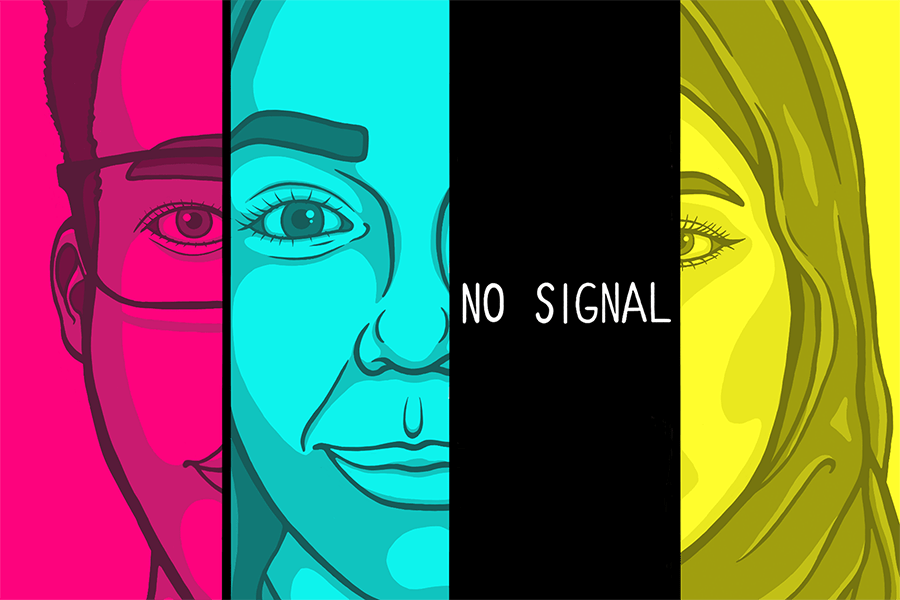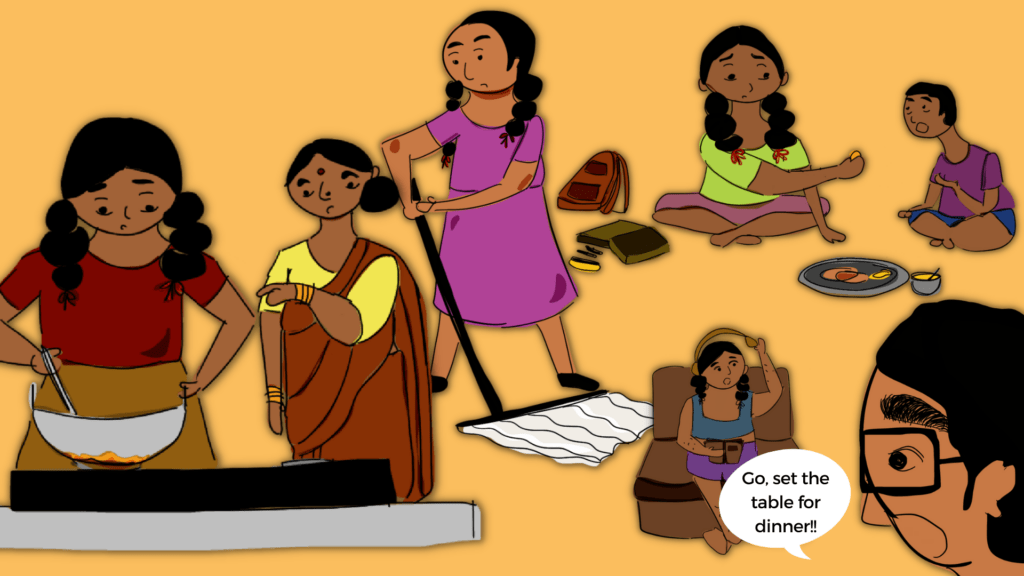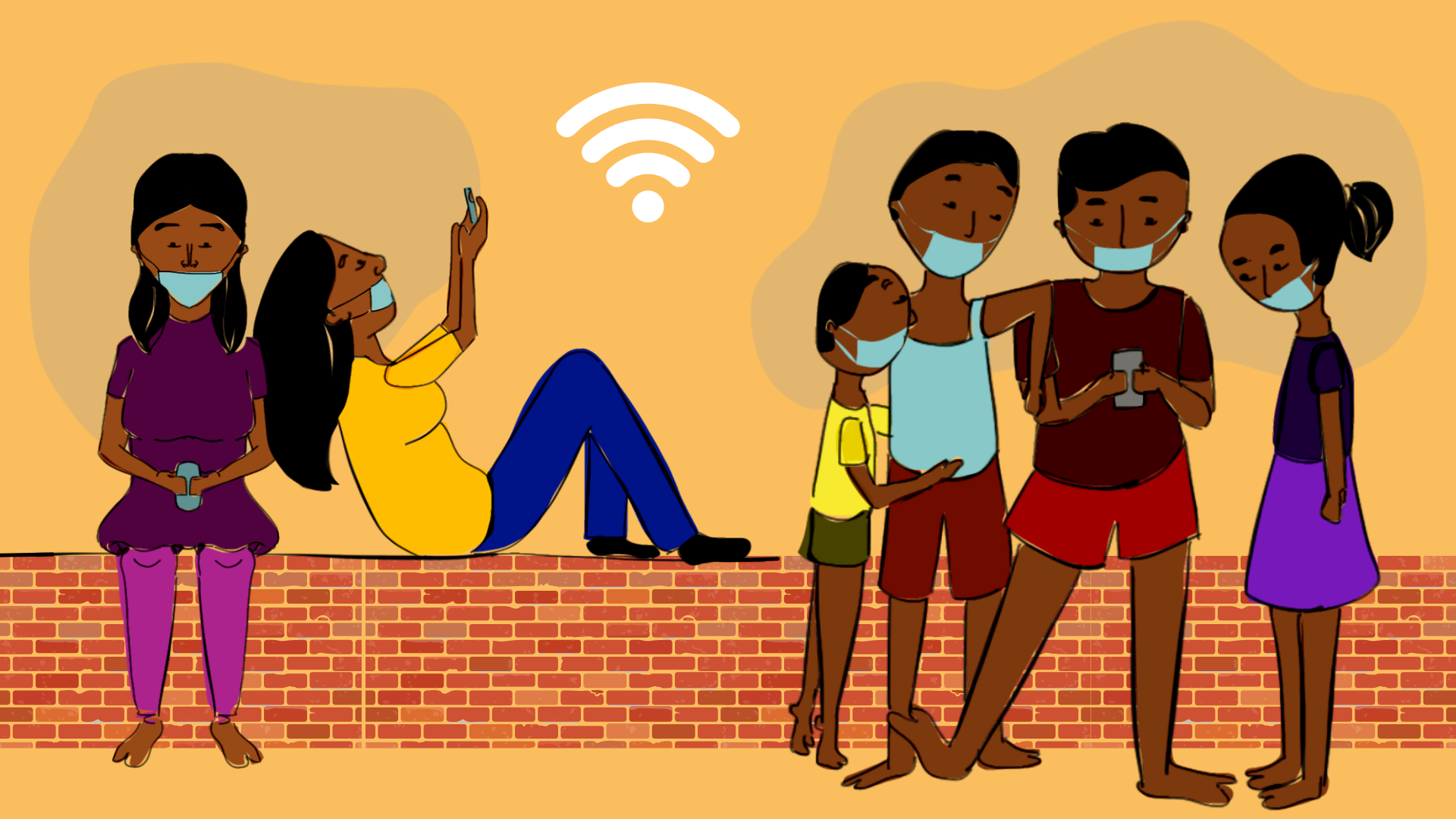‘Power to Empower‘, the tagline of Digital India, rippled across the entire nation as innumerable billboards were set up in every nook and corner of the country to commemorate the arrival of the government’s flagship programme established by Prime Minister Narendra Modi in the year 2015. It was supposed to be a game changer that would “transform India into a digitally empowered society and knowledge economy.” But in a country rife with gender inequality, can that empowerment be truly felt? And empowerment for whom exactly?
Seven years have passed since the idea of Digital India was first proposed; where does it stand now, in 2022, with the global pandemic in between? Like cracks that appear in a faulty glass over time, the ever-widening gender gap has only become more and more visible in the digital sphere. Needless to say then, women have once again been handed the shorter end of the stick with everything going ‘online’ and our dependence on technology increasing day after day.
Gender disparity at ground level
Indiatimes reports in a new survey, “Nearly 80% of those surveyed said they wanted at least one son in their lifetime, according to the latest figures from the National Family Health Survey (NFHS-5), the most comprehensive household survey of Indian society by the government.” This is a major sign of the ongoing prevalence of the preference of the male child over the female child. Therefore in a country with such statistics, digital or technological accessibility by women is from the very start in extremely poor condition. One personal example is when my mother asked our domestic worker for her phone number, and she replied that she does not own a phone but can give us her husband’s number since he does.
Also Read: Navigating Parenthood In A Rapidly Changing, Digital World
Nitika Banhani in an article for Morung Express collects data which states that in “A study conducted by the GSMA (Global System for Mobile Communications – Association) titled ‘Connected Women 2019 Gender Gap Report’, it was revealed that, ‘Indian women are 28 percent less likely than men to own a mobile phone, and 56 percent less likely to use mobile internet.’ This represents one of the widest mobile gender gaps in the world. In another survey done by the International Telecommunication Union in 2021, it was released that within Asia-Pacific, India had the widest gender gap in internet usage in recent years, a gender gap of 40.4 percent with only 15 percent of women accessing the internet versus 25 percent of men.“
Technology is power, and access to the internet is an essential part of human rights, but in a country where women repeatedly face gender based violence and discrimination in areas of employment and education, along with access to proper healthcare, it is of no surprise that the denial of access to technology is another strong patriarchal tool helping in the subjugation of women.

Post-pandemic worsening of gender inequality
With everything closed, women have further been entrapped in their homes with less exposure to the outside world. In an article for Assembly, Malala Fund Education Champion and director of Joint Operation for Social Help (JOSH), Aheli Chowdhury mentions that “The economic impacts of the pandemic have had disastrous effects on girls’ education in India. The income of people has consistently gone down [during the pandemic], and when the family income goes down, girls are the first ones to be pulled out of school.” Aheli also agreed that “Most students don’t have mobile phones or any form of digital access, and that’s true for girls, mostly for girls, because even if there is one smartphone, it won’t be for the girl. Most of the time it would be one smartphone in the family and that would be typically for the father or the brother.”
Also read: Digital Footprint: We Must Equip Young Internet Users To Exercise Caution And Practice Cyber Hygiene
In an incident, our neighbour’s housekeeper’s daughter was helping her mother with some bags. When asked questions, she replied, “It has been a long time since she left school to help her mother earn daily wages.” The irony is that while schools were closed, this girl’s brother continued his education by owning a smartphone, but she was called out to assist in earning the family’s living. Girls have been completely burdened with all the housework and held back from getting an education with excuses of marriage and managing domestic work. Even in urban areas, it gets propagated that bread earners should own smartphones and have digital access while women, if homemakers, particularly do not have that need for technological prowess, and hence do not need a digital life. Even women breadwinners are denied access.

While men enjoy entry to the digital world for academic, professional, or leisure purposes, most women are barred from it. Such inaccessibility then increases female illiteracy and backwardness, pushing back progress towards gender equality in the country by almost a decade. With the pandemic and inaccessibility, women have lost out on numerous opportunities, and not being able to be a part of digital spaces has led to a lack of knowledge and awareness, coupled with being locked up in domestic duties without the freedom to branch out in the outer world.
Accessibility: Social and class divide
Furthermore, accessibility to technology is determined by social status and the caste divide. So women from marginalized subgroups in India face double displacement and are more prone to vulnerability and technological inaccessibility. The Indian Institute of Dalit Studies correctly claims that the need of the hour is to study the “Consequences of the expansion of digital India (both prospects and constraints)…to address the question of how inclusion and more meaningful participation is possible to create a positive identity among socially marginalised women.” So a journey towards reducing the gender disparity in technological access is also socially beneficial.
Also Read: International Day Of The Girl Child: How Far Ahead Are We In Terms Of Securing The Girl Child?
In addition to that, inclusivity leads to an increase in the number of people with digital access and reaps economic benefits like a significant rise in the country’s GDP. More and more women would have higher chances of employment, education, and increasing awareness of how to keep pace with the changing world. The digital space is not only a space of knowledge but is also steadily becoming a platform for women’s empowerment. From the working of small women-held businesses and big startups to helpful initiatives concerning the progress of women, everything requires a technological base nowadays. That is why for the advancement of society as a whole, the erasure of gender disparity should on the top of the Government’s agenda. Only then, perhaps, can the Digital India dream initiative fully take off.
About the author(s)
Sayeri Biswas recently graduated with a bachelor’s degree in English from St. Xavier’s College, Kolkata. Whether it’s philosophically
contemplating life or gushing about the most recent book/series she has indulged in, she is always up for a deep conversation. Literature is the great love of her life, and in the future, she hopes to continue talking about all art forms as passionately as she thinks
about them.




